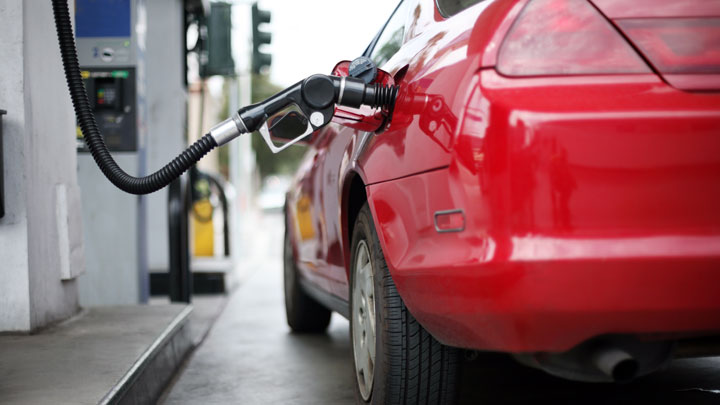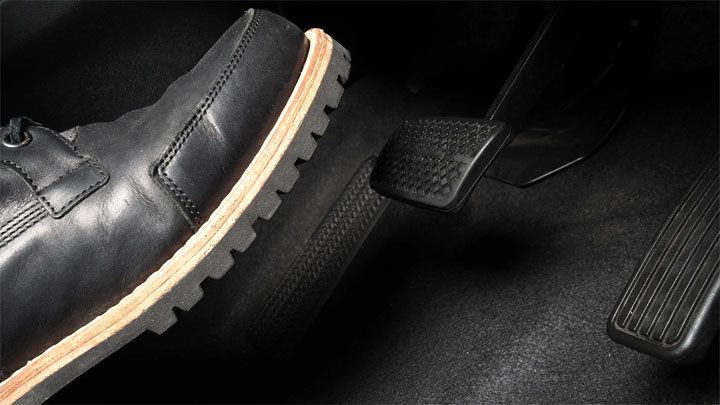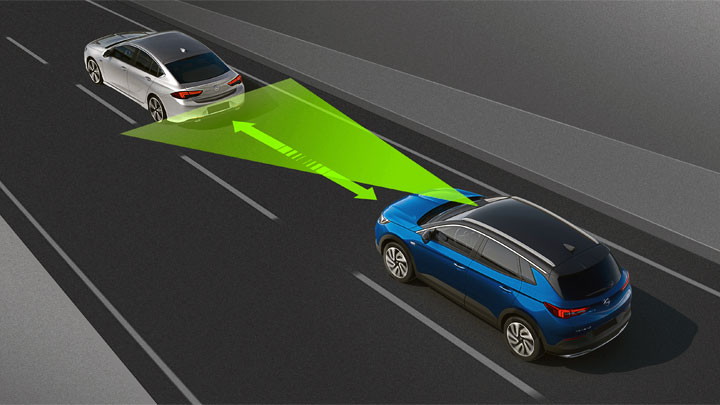Does Cruise Control Save Gas? (and Other FAQs)
With gas prices seemingly always on the rise, drivers are looking for ways to improve fuel efficiency. Many believe cruise control can help save gas by maintaining a steady speed.
But does this popular feature actually reduce fuel consumption? This article explores whether using cruise control can help you save money at the pump and when you should NOT be using cruise control.

Related: Does Running Your A/C Use More Gas?
Does Using Cruise Control Save Gas?
Yes, in many cases, cruise control use can actually increase a vehicle’s fuel economy by as much as 5%-15%. While this might be surprising to some, there is good reasoning behind this decrease in fuel consumption.
Since fuel consumption is greatest during acceleration, it stands to reason that the best way of achieving peak fuel economy would be to maintain a set speed. This can be quite difficult to achieve by way of standard pedal application. However, maintaining a set speed is easily achieved through the use of cruise control.

Since designated speeds are maintained by way of PCM control when a vehicle’s cruise control is activated, the “human” aspect of speed maintenance is eliminated. In many cases, even speed fluctuations incurred while traveling uphill or downhill are quite minor, when using cruise control.
Read Also: What is ECO Mode? (and When Should You Use It?)
When Should You NOT Use Cruise Control?
The use of cruise control is not advised when driving in slippery conditions, such as those presented by rain or snow. This is due to the fact that road conditions can change in an instant when driving in these less than ideal conditions, thereby making it essential to drive in response to the situation at hand.

The use of cruise control is also not advised when one is drowsy or driving in congested conditions. Utilizing cruise control when tired only further eliminates one’s need to focus on the task of maintaining a set speed, often exacerbating this drowsiness.
Likewise, driving in stop-and-go traffic also requires a higher degree of concentration, as a significant amount of speed metering becomes necessary.
Does Cruise Control Use Brakes?
Cruise control, in its most basic form, does not use a vehicle’s brakes to meter speed. Quite the contrary, cruise control functions of this variety rely upon throttle plate actuation to maintain a constant speed, under an array of circumstances.
However, many late-model vehicles now feature adaptive cruise control, which does indeed utilize brake application as a means of slowing a vehicle’s speed. Systems of this type most often apply a vehicle’s brakes as a measure of accident avoidance, or to increase a vehicle’s trailing distance.
See Also: What Does the Overdrive Button Do?
Can Cruise Control Mess Up Your Transmission?

Contrary to popular belief, the use of cruise control does not accelerate transmission wear. In all actuality, regular cruise control use is actually capable of decreasing drivetrain wear, due to the significant reduction in manual throttle actuation.
A vehicle experiences the least amount of wear when operating at a constant, steady speed, for prolonged periods of time.
Many drivers are fooled into thinking that their vehicle’s transmission is being damaged when a vehicle’s cruise control causes an engine’s RPMs to spike during downshifting. In truth, this is not the case at all, as reasonably-timed downshifting is an accepted, and perfectly safe method of quickly decelerating any vehicle.
Where Should You Put Your Foot While Using Cruise Control?

When using cruise control, it is always advised to keep your feet near a vehicle’s brake pedal at all times. Both road and traffic conditions can deteriorate in moments, necessitating additional input upon a driver’s behalf.
One is much more capable of mounting such a response in a timely manner, if their foot is near a vehicle’s brake pedal at all times.
This is even true when operating a vehicle that possesses adaptive cruise control. Though many drivers are lulled into a false sense of security when operating a vehicle under these conditions, one must be capable of maintaining full vehicle control at any given time.
That said, don’t drive with two feet (left foot over the brake, right foot over accelerator). Instead, keep your right foot near (not resting on top of) the brake pedal.
You may be tempted to cross your feet or legs (especially on a long drive) to stretch them out. But doing so severely impacts your reaction time when a situation calls for immediate braking.
Related: 5 Reasons Your Cruise Control Doesn’t Work
Are There Different Types of Cruise Control?

There are several different types of cruise control utilized by various vehicle manufacturers over the past several decades. The most basic of which is a standard, speed-limiting cruise control. As its name would suggest, a speed-limiting cruise control essentially governs a vehicle’s speed at a preset rate, thereby maintaining this speed under a variety of conditions.
Over the past decade, adaptive cruise control has also gained immense popularity. Systems of this type prove capable of maintaining a pre-set speed, while also metering a vehicle’s trailing distance, making any adjustments in speed as necessary. Systems of this nature rely upon a number of radar-based sensors, positioned along a vehicle’s exterior.
The latest form of cruise control to arrive on the scene has been that of a semi-autonomous design. Semi-autonomous cruise control systems meter a vehicle’s speed, braking, and steering, in response to traffic conditions. Systems of this type are capable of use in stop-and-go traffic, without driver intervention.
Related: 9 Benefits of Cruise Control
Can Cruise Control Be Added to a Vehicle?
In most cases, an aftermarket cruise control kit can be easily and affordably added to almost any vehicle. In fact, a number of aftermarket suppliers currently manufacture and market a variety of kits for this exact purpose.
Aftermarket cruise control kits typically include detailed installation instructions, and/or provide a direct phone number to the company’s technical support team. This eliminates much of the guesswork surrounding the installation of such systems.
It is also worth mentioning that aftermarket cruise control kits are available for vehicles with both cable and electronically actuated throttle linkages. While vehicles with the former of these two throttle configurations will require the installation of an additional throttle cable, the latter typically relies upon a module and basic wiring to facilitate operation.
- P0480 Code (Symptoms, Causes, and How to Fix) - Apr 19, 2024
- Car Temperature Gauge Stopped Working? (Here’s Why) - Apr 15, 2024
- Ignition Coil vs Coil Pack (What’s the Difference?) - Apr 8, 2024
